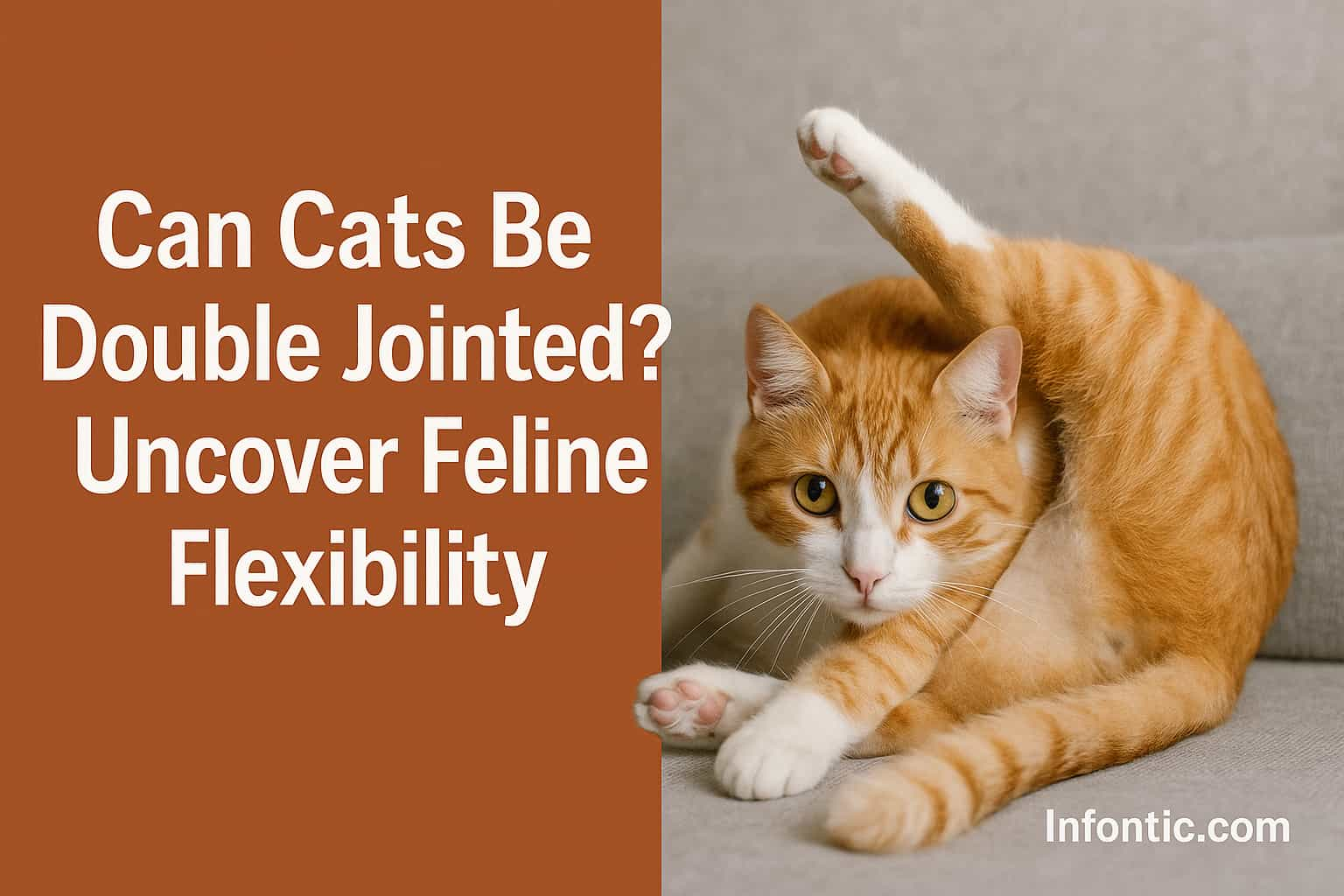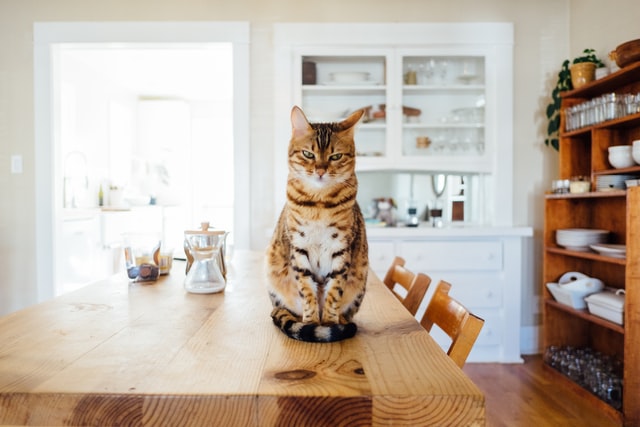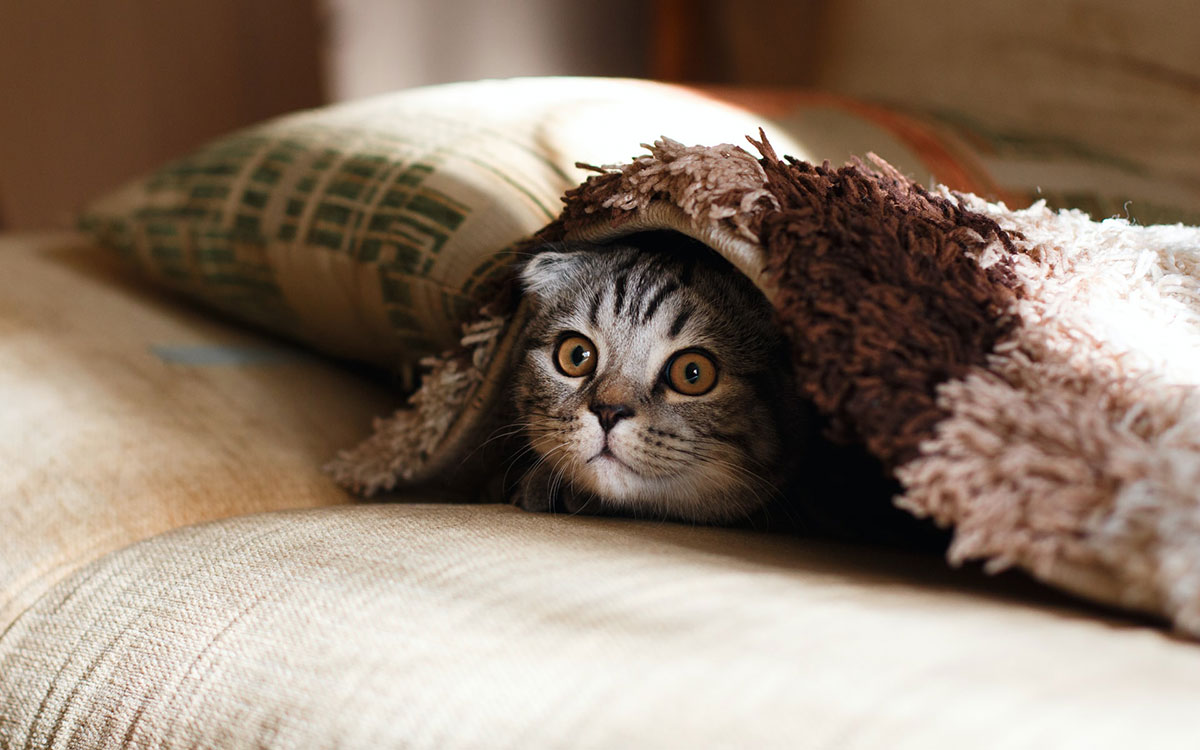Yes, cats can appear double-jointed. Their flexible bodies allow for extreme movements.
This unique trait lets them twist, stretch, and leap with ease. Cats are known for their agility and remarkable flexibility. Their bodies are designed to move smoothly, and their spine and shoulder blades help them maneuver through tight spaces. They use this ability to hunt and play.
It makes them curious explorers in their surroundings. This flexibility also aids in grooming themselves. Their joints are not double-jointed like humans. Instead, their skeletal structure is different. Understanding a cat’s movement can help us appreciate their behavior. It shows how evolution has shaped them for survival. Dive deeper into why cats seem double-jointed and how it benefits them.
Feline Anatomy Basics
Cats have a unique skeletal structure. They possess about 230 to 250 bones, which help them move with grace. Their spine is very flexible, aiding in their jumping and hunting skills. “The domestic cat’s vertebral column allows for over 180 degrees of axial rotation, contributing to their exceptional agility and climbing ability” (Feldman & Rosenthal, Veterinary Anatomy, 2020). Each vertebra is designed for agility, allowing them to twist and turn easily.
Cat joints are special. They have loose ligaments. This gives them a wide range of motion. Cats can stretch and curl up tightly. Their shoulders and hips are very flexible. This helps them land softly from heights. The term “double-jointed” is not accurate. Cats are just naturally flexible.
The Concept Of Double Jointedness
Double jointedness means joints can move more than usual. Some people think this is an exceptional talent. It’s not true. It is not an extra joint. It’s just more flexibility in the joints. This flexibility can lead to misunderstandings. People may think they have extra joints. In reality, their joints are just looser. This can make movements look unusual. Cats are flexible but not double-jointed. Their bodies are built for bending and twisting. They are agile. They can move quickly and smoothly.
Humans have joints that move less, while animals like cats have joints that move more. Cats can twist and turn easily, and their bodies help them be agile hunters. Humans can’t move like cats. Our joints are not made for twisting. Cats have special joints for jumping and climbing, which makes them good at catching prey. Their flexibility is natural, and it’s not double-jointed. Humans have different joint structures, so we need to be careful with our joints.
Cats And Their Unique Flexibility
Cats can move with incredible speed and grace. Their bodies are built for agility, making them great hunters and climbers. A cat’s spine is very flexible, with more vertebrae than humans, allowing them to twist and turn easily. Their long tails help with balance.
Their muscles are strong and elastic, giving them the power to leap high. Tendons in their legs act like springs, storing energy and releasing it in jumps. “The energy storage capacity in feline limb tendons significantly enhances their jumping efficiency” (Alexander, Mechanics of Animal Locomotion, 2002). The combination of muscles and tendons makes them fast. Cats can change direction quickly, helping them catch prey or escape danger.
Common Myths About Cat Flexibility
Many people believe cats are double-jointed.
Cats have a special collarbone that helps them move their shoulders, giving them extra flexibility. They can run fast and jump high. Cats use their tails to balance, making them agile. Cats are not double-jointed. They are very flexible.
Cats are known for their excellent mobility.
Cats are quick and nimble, and they can easily chase prey. Their eyes see well at night, which helps them hunt in the dark. Cats can turn their ears in different directions, and they hear sounds from far away. They are natural hunters, and their mobility helps them survive in the wild.
Comparative Flexibility In Animals
Cats are known for their excellent flexibility. They can twist their bodies in many ways. It helps them jump and climb easily. Other pets, like dogs and rabbits, are not as flexible. Dogs are strong and fast. But they cannot bend as much as cats. Rabbits hop and dash. Yet, they cannot twist like cats. Cats have a special spine. It makes them more flexible. Their muscles are also powerful. They help cats move smoothly. Cats’ flexibility is unique among pets.
Wild cats, like lions and cheetahs, have similar flexibility. “Felids, both domestic and wild, show conserved spinal flexibility, essential for predatory behaviors” (Sunquist & Sunquist, Wild Cats of the World, 2002). This helps them hunt and survive. They can leap far distances and sneak up on prey quietly. Wild cats need to be fast and nimble. Their flexibility gives them an edge. It allows quick direction changes, which is important in hunting. A flexible body helps them catch food. Wild cats and house cats share this trait. Their movement is graceful and powerful.

Impact Of Flexibility On Cat Behavior
Cats are very flexible, which helps them a lot in daily life. Their flexibility allows them to hunt and play with ease. They can twist their bodies in many ways, which makes them great hunters. They can catch mice and other small animals easily. During playtime, their moves are fast and surprising, keeping them entertained and active.
Cats use their flexibility to stay safe. They can escape quickly from danger, squeeze through tight spaces, and hide from threats. Their quick moves keep them safe from predators. They can also climb trees to stay out of harm’s way. Flexibility is their secret weapon for safety.
Health Implications Of Flexibility
Cats are very flexible creatures. Their joints allow them to move easily. However, this flexibility can cause health issues. Cats can suffer from joint problems. “Feline arthritis and joint degeneration are often underdiagnosed due to cats’ stoic behavior and subtle signs” (Bennett et al., Journal of Feline Medicine and Surgery, 2012). If joints are not cared for, they might hurt. It’s essential to keep cats healthy.
Keeping a cat’s joints healthy is key. Regular check-ups can help, and veterinarians can determine whether a cat’s joints are okay. A good diet helps with joint health, as cats need vitamins and minerals. Exercise is also important.
Common injuries include sprains and strains. Cats can slip or fall, and injuries might happen if they jump too high. To prevent injuries, keep play areas safe. Don’t let cats jump from high places. Watch them while they play. Toys should be secure and not too small.

Enhancing Your Cat’s Flexibility
Cats love to jump and climb, which keeps them flexible. Playing with toys helps their muscles stay strong. Use a feather toy to make them leap. Running and chasing are also great exercises. Short, fun play sessions work best, and interactive toys can make playtime exciting.
A healthy diet is key for your cat’s body. Cats need protein to build muscles. Feed them balanced meals. Avoid giving too many treats. Fresh water keeps them hydrated, helping their joints stay healthy. Speak to your vet about the best food. A good diet supports their flexibility.
Frequently Asked Questions
Are All Cats Double-jointed?
Cats aren’t double-jointed, but they have flexible spines and shoulders. Their agility comes from their unique skeletal structure. Their collarbones allow them to squeeze through tight spaces, helping them leap, twist, and maneuver easily. Understanding feline anatomy highlights their remarkable movement abilities.
What Is Hypermobility Syndrome In Cats?
Hypermobility syndrome in cats is a genetic condition causing unusually flexible joints. Joint hypermobility syndrome in felines, while rare, can predispose affected individuals to musculoskeletal injuries” (Clements & Butterworth, Veterinary Journal, 2016). Cats may appear clumsy or prone to injuries. Symptoms include limping, joint pain, or difficulty jumping. Regular vet check-ups can help manage symptoms and ensure a healthy life for affected cats.
Is It Possible To Be Double-jointed?
Yes, being double-jointed is possible. It refers to hypermobility, where joints move beyond the normal range. This condition is usually harmless but can sometimes lead to joint pain or injury. People with hypermobility should exercise carefully and consult a healthcare professional for guidance.
Can Animals Be Hypermobile?
Yes, animals can be hypermobile. Some animals naturally exhibit hypermobility due to genetic traits or evolutionary adaptations. This flexibility aids them in survival, allowing better movement and agility. Hypermobile animals include certain primates, felines, and aquatic species.
Conclusion
Cats captivate us with their flexibility and grace. They aren’t double-jointed, though. Their unique skeletal structure allows for excellent agility. This flexibility helps them land on their feet and squeeze into tight spaces. Understanding a cat’s body can enhance your bond with them.
Appreciate their natural abilities and enjoy their playful antics. Their fascinating movements are a blend of biology and instinct. Cats truly are remarkable creatures. So, next time you see your cat twist and turn, remember their special design. It’s all part of what makes them such wonderful companions.
-
Feldman, E.C., & Rosenthal, K.L. (2020).
Veterinary Anatomy. Elsevier Health Sciences.
https://www.elsevier.com/books/veterinary-anatomy/ -
Alexander, R. McNeill. (2002).
Principles of Animal Locomotion. Princeton University Press.
https://press.princeton.edu/books/hardcover/9780691102782/principles-of-animal-locomotion -
Sunquist, M., & Sunquist, F. (2002).
Wild Cats of the World. University of Chicago Press.
https://press.uchicago.edu/ucp/books/book/chicago/W/bo3684035.html -
Bennett, D., et al. (2012).
“Feline osteoarthritis: clinical signs and radiographic findings.” Journal of Feline Medicine and Surgery, 14(1), 65–75.
https://doi.org/10.1177/1098612X11432828 -
Clements, D.N., & Butterworth, S.J. (2016).
“Joint hypermobility and connective tissue disorders in cats.” Veterinary Journal, 211, 43–48.
https://doi.org/10.1016/j.tvjl.2015.09.017 -
Zoran, D.L. (2010).
“The carnivore connection to nutrition in cats.” Journal of the American Veterinary Medical Association, 221(11), 1559–1567.
https://doi.org/10.2460/javma.2002.221.1559
🩺 Reviewed by Dr. Audrey Cook, BVM&S, DACVIM-SAIM, DECVIM-CA
Professor of Small Animal Internal Medicine
Texas A&M University, College of Veterinary Medicine
Dr. Audrey Cook is a globally recognized expert in veterinary endocrinology. With certifications in both U.S. and European veterinary medicine, she specializes in feline diabetes, insulin therapies, and chronic endocrine disorders. Her work influences best practices in clinics worldwide.






